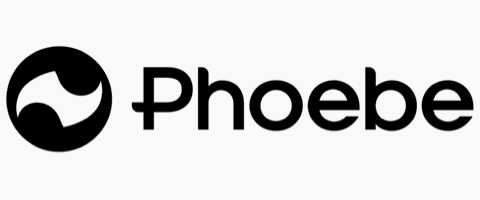CUSTOMER PROFILE

Phoebe Putney Health System developed a workforce management strategy that helped them achieve strong financial outcomes while satisfying and engaging staff through staffing process improvements.
LOCATIONS: Serves more than
500,000 residents in a 35-county
region
LICENSED HOSPITAL BEDS: 792
EMPLOYEES: 4,500 physicians,
nurses, professional staff, and
volunteers
KEY CHALLENGES
-
Spending $9M annually in overtime expenses
-
Inconsistent staffing systems and practices
-
Staffing office not 24/7
-
Inconsistent schedules
-
Units staffing in silos
-
Inability to view staffing needs globally
STRATEGIC INITIATIVES
-
Standardize time/attendance & staffing/ scheduling processes and policies
-
Prioritize deployment based on overtime spending
-
Restructure staffing office to be a 24/7 resource
-
Improve visibility and pickup of open shifts
PROJECT GOALS
-
Reduce overtime spend
-
Standardize processes
-
Leverage the functionality of existing workforce management solutions
SOLUTIONS
-
Time and Attendance
-
Staffing and Scheduling
- Mobile Time Management
OUTCOMES
-
Realized $3M savings in one year
-
Moved from four to six-week schedules
-
Cancelled contracts for unused technology
-
Updated attendance policy
-
Better utilize staff to cancel agency and reduce overtime
-
Reduced OT from 4.6% to 3.5%
-
Tightened attendance policy to gain back 125 FTEs, including 33.8 nursing FTEs
"Reaching our goal of reducing overtime expenses would not have been possible
without the successful marriage of dedicated process improvement and the improvement and symplr’s Workforce Management solutions. Our process improvement team was able to eliminate inconsistent staffing systems and practices so that we could realize significant cost savings."
- Brian Church, Senior Vice President, Chief Financial Officer
Cross-Functional Team Spearheads Workforce Management Initiative
With overtime at 4.6% of labor expenses and costing the organization $9M annually, the Phoebe team knew it was time to take action. Recognizing that it would require nursing and finance teamwork, Evelyn Olenick, SVP and Chief Nursing Officer and Brian Church, SVP and Chief Financial Officer worked together to convene a team to address the issue. As project co-sponsors, they created a team comprised of nursing, finance and performance excellence leaders and developed a Six Sigma Black Belt project that would focus on reducing overtime expenses. As the Phoebe team evaluated the situation, they realized that the overtime was a symptom of inconsistent staffing practices and a lack of transparency across the organization. Units were staffing in silos because they did not have access to a global view. Staffing software solutions were in place, but only a few units were using the technology well. In fact, many areas were only using a partially built system or they weren’t using it at all, instead relying on paper schedules. And, while a central staffing office was in place, they only handled contract labor and did not operate 24/7. As Olenick explains, “We recognized that we had laws in our staffing processes and systems. We lacked a central staffing office and did not have a systematic approach to scheduling and reducing overtime. That was the impetus for starting this high priority Six Sigma project.”
Process Standardization: A Critical First Step
After a review of processes and technology, the team found three keys areas for updates and standardization:
-
Revitalization of an attendance policy
-
Longer schedule periods
-
Technology standardization and improved usage
David Morey, Director of Continuous Improvement explains, “Overtime is always on the radar, and we had lot of data and could see performance gaps. What we needed was a standard, consistent process-driven approach to change the way we do business day after day. We needed to standardize across the organization so that we could reduce variation and close the performance gap. A single approach could create consistent benefits, remove waste and free up capacity for our staff to work on things of more value.”
During the review of time/attendance and staffing/ scheduling policies, the team found that an outdated attendance policy could be updated to reduce the number of callouts that employees were allowed. By working with Human Resources to determine what other regional Georgia hospitals were doing, Phoebe Putney revitalized its callout policy to recover the equivalent of 125 FTEs, including 33.8 nursing FTEs. Olenick explains, “Those are FTEs we were able put back at the bedside simply by using our existing staff more effectively.”
They also made the decision to move from 4-week schedule periods to 6-week periods. This change eliminates four scheduling periods per year, which reduces the amount of time spent creating and adjusting the schedule. And, the staff appreciates that they have a longer window of schedule predictability.
Phoebe Putney Health System had automated staffing and scheduling solutions installed, but usage was limited. The lack of solution standardization and the use of paper-based processes resulted in inconsistent staffing practices, limited visibility into staffing needs and units staffing in silos. After careful consideration, the health system decided to use its symplr solutions to support the go-forward strategy.
Prioritized Rollout for Maximized Results
With the priority of addressing overtime, the strategic system rollout began with the inpatient nursing areas and the associated cost centers such as lab and pharmacy. Brian Church, Senior Vice President and Chief Financial Officer explains, “Better overtime management was our primary focus, so when we created our rollout timeline, it made sense to start with the areas that had the potential to realize the biggest overtime cost savings.”
Within just one year, the team had completed the rollout of 171 out of 299 cost centers, with two campuses going live during a single phase. Because they focused on the areas with the highest overtime, they had the ability to impact $7.4M of the $9.0M in overtime expenses. By starting with the areas with the largest overtime expenses, the rollout to 57% of the units allowed them to manage 82% of the overtime costs, and resulted in a $2M decrease in overtime spend.
Better Scheduling Processes = Cost Savings and Staff Satisfaction
Overtime can lead to staff burnout and turnover, making better overtime management the key success factor from both a financial and staff satisfaction perspective. Recognizing that inconsistent and siloed staffing processes were the root cause of the issues with overtime, the team focused on improving and standardizing the scheduling processes.
Creating transparency was critical to the strategy. By making sure that the right people can see the right shifts, they empowered frontline staff and managers to stop staffing in silos and take a broader approach to staffing. Because managers have visibility into shifts and staff availability, they can make informed decisions about who is the best resource to pick up the shift.
Phoebe uses a combination of self-scheduling and track or rotating schedules. In this way, they can provide nurses with schedule predictability and flexibility. That’s a staff satisfier.
The new staffing processes have also resulted in a higher pick-up of vacancies. With more awareness about staffing holes, staff and nurse managers can take a more proactive approach to filling the vacancies in advance of the shift.

Creating a 24/7 Central Staffing Office
While there was already a central staffing office (CSO) in place, the team had a vision for restructuring the CSO to provide more value. They are making the CSO the hub of efficiently moving the staff to minimize agency and overtime, while always keeping an eye on patient care needs.
As a central hub for nursing, the CSO team fills any staffing holes that remain once the schedule is published. With a global view of staffing needs, they can effectively move resources around. The end result of that transparency: the ability to cancel agency that wasn’t necessary and a $2M reduction in overtime.
Phoebe has also moved from managing staff licenses with a paper-based system to an electronic system. By utilizing the licensure feature in the staffing and scheduling solution, the CSO is able to be a centralized resource for tracking and managing BLS and ACLS cards, initial competencies and licenses that have an annual due date. Now, reports can be pushed out to unit leaders to stay on top of licensures and competencies proactively rather than each unit managing paper files and scrambling to stay on top of due dates.
Looking to the Future
The Phoebe team has made critical changes that have delivered strong outcomes. However, they have plans to further leverage technology to realize more results.
Because staffing and scheduling is now better managed, the CSO and the Black Belt team have the ability to use a more consistent approach to produce nursing labor budgets for the next fiscal year. With better data easily accessible, the team has a better understanding of the needs and opportunities as they set target FTEs during the budgeting process. This process improvement was well-received by the senior leadership team and will continue going forward.
Phoebe Putney has also started using Mobile Time Management with Location to empower managers and staff to handle staffing and scheduling tasks on their mobile devices. Managers can conveniently view and approve schedules and time cards from wherever they are. Morey says, “I can be on vacation 900 miles away, approving timecards on my phone.” Staff can view their schedule, pick up open shifts and sign off on their timecards with their phone. And, with location-enabled clocking functionality, nurses don’t need to swipe in at a badge reader. As one nurse shares, “It is convenient when there is a line at the clock. I could use it and not have to wait and potentially be late for work.”
Partnering for Improvement
"Having an electronic scheduling system is an efficient solution for our nursing leaders in reducing the manual workload for staff scheduling. In today’s ever-changing health care world, the demands of time combined with staffing challenges due to turnover and vacancies necessitates providing efficient and cost-effective tools for our leaders. The Staffing and Scheduling platform was also foundational in development of our 24/7 centralized staffing hub to achieve better workforce management." - Evelyn Olenick, SVP and Chief Nursing Officer
”We set big goals for multi-department, multi-campus change. We created a consistent staffing process across the entire organization that gave managers the ability to see the data, know what they are looking at and make better staffing decisions. And, nurses are able to schedule themselves into open shifts across the organization." - David B Morey, LSSBB, Director of Continuous Improvement